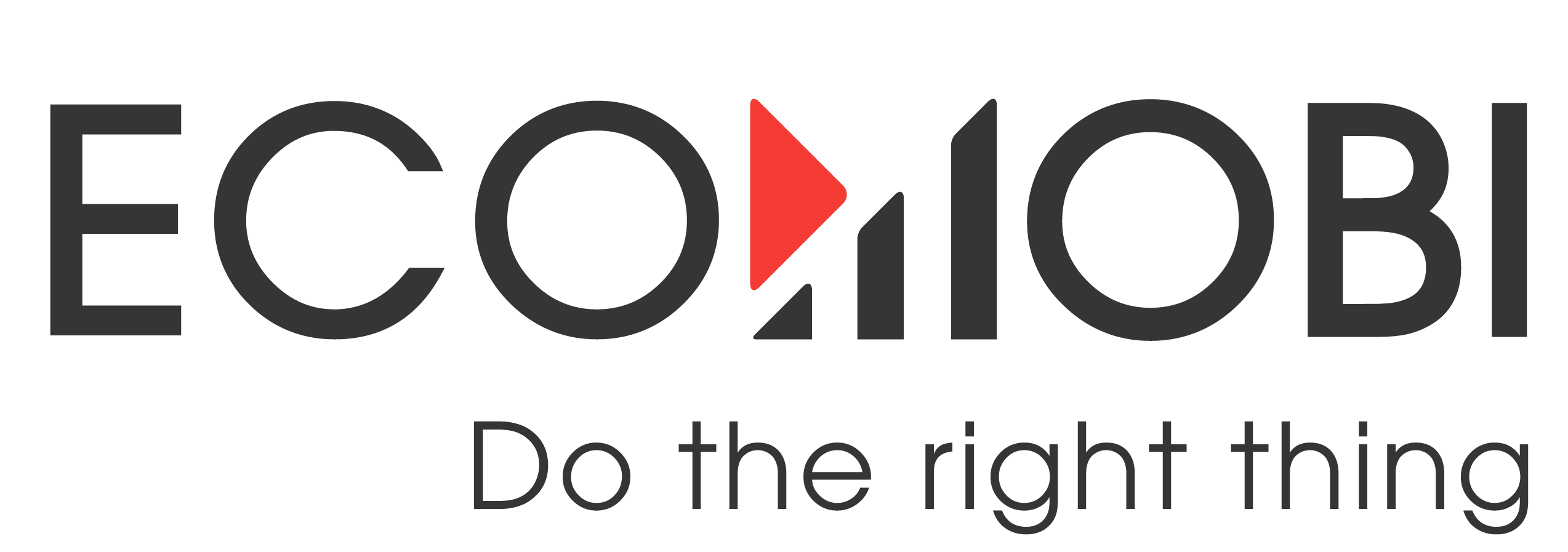In a world of rising costs and economic uncertainty, achieving financial security is a top priority for many Filipinos. Passive income Philippines offers a smart solution – earning money with minimal ongoing effort after initial setup. This guide is designed to be your roadmap, especially if you are looking for best passive income ideas Philippines for beginners or want to explore the world of passive income Philippines online.
What is passive income?
Passive income is money earned from ventures where you’ve invested time, money, or resources upfront, but require little daily involvement afterward. Unlike active income from a job or freelance work, where you trade your time and skills for a salary, passive income streams are designed to generate revenue even “while you sleep”. For instance, royalties from a book or dividends from stocks fall under this category.
Key benefits:
- Financial freedom: Your earnings are not directly tied to the hours you work.
- Security: Multiple income streams protect you from job loss or unexpected expenses.
- Wealth Compounding: Your money starts working for you, accelerating your financial goals.
Common misconceptions:
It’s crucial to understand that “passive” doesn’t mean “zero effort.” Most passive income streams require an upfront investment of either time or money to set up. The key difference is that once established, they require minimal maintenance to keep the income flowing.

Why passive income is crucial in the Philippines?
- Inflation and cost of living: According to the report from the Philippine Statistics Authority (PSA), the average family expenditure in the Philippines is PHP 258,050 (in 2023), while the average annual income is estimated to be around PHP 353,230. So, passive income helps combat rising costs. Still, rising costs make it hard for many families to rely on just one income.
- Wage growth vs. inflation: Although wages are growing – around 5.5% this year – real wage growth (which accounts for inflation) has been slower. The average monthly wage varies widely, from about ₱19,400 to ₱44,800 depending on the job, pushing many Filipinos to look for extra income sources like passive income.
- Digital adoption & e-commerce growth: With about 97.5 million internet users (84% of the population) and a booming $24.5 billion e-commerce market, the Philippines offers great opportunities for online side incomes like affiliate marketing and selling digital products.
- Time flexibility: By decoupling your income from the hours you work, you gain more time for family, hobbies, and other pursuits
- Diversified Income: Relying on a single source of income is risky. Passive income streams add layers of financial security.

Passive income trends in the Philippines for 2025
As the Philippine e-commerce market hits approximately $16.75 billion in 2025, digital and tech-driven passive income is surging. Emerging trends include AI-generated content for automated blogging or courses, sustainable investments like green REITs amid climate focus, and crypto staking with platforms adapting to regulations.
Post-pandemic recovery has boosted peer-to-peer models, with the digital economy growing rapidly per Bangko Sentral ng Pilipinas (BSP) reports. Focus on niches like eco-friendly products or TikTok affiliates for high potential.
To help you choose, here’s a simple way to classify different passive income ideas Philippines:

Best passive income Philippines online
For a beginner, the internet is the ultimate starting point. These passive income ideas in the Philippines offer maximum flexibility with minimal initial capital.
Affiliate Marketing
This is the top choice for anyone seeking passive income Philippines for beginners, especially for those who are active on social media (Instagram, Facebook, Tiktok, Youtube,…) or own a website/blog.
With a growing e-commerce market and high social media penetration, Filipinos are increasingly looking to influencers and content creators for product recommendations (e.g., beauty products, home coffee brewing, budget travel in the Philippines, tech gadgets,…).
- Pros: Zero capital needed, no inventory to manage, highly flexible, perfect for social media users.
- Cons: Income can be inconsistent initially; requires building trust with an audience.
- Your first 3 steps:
- Choose your niche: Focus on a niche you’re passionate about (gaming, skincare, travel affiliate, home cooking,..) and and have high consumer demand. You can refer to the list of Tiktok niches 2025 for affiliate.
- Get your tools (for Free): Sign up for an affiliate platform like Ecomobi. It gives you instant access to thousands of products from top brands in one dashboard, eliminating the hassle of signing up for individual programs.
- Share your affiliate link: Generate your unique link, and share it in social media with your genuine recommendation.

Read more:
Creating and selling online courses or digital products
Creating and selling digital products (sell digital products like e-books, online courses, stock photos, or templates) is one of the most scalable passive income ideas Philippines offers. Monetize your skills by creating a product once and selling it repeatedly.
In the Philippines, platforms like Teachable or Gumroad cater to local creators. Topics like freelancing skills or Filipino cuisine resonate, earning PHP 5,000 – 20,000 monthly once established.
- Pros: High-profit margins as there are no physical production or shipping costs, global market reach.
- Cons: Requires significant time and effort to create high-quality products, marketing is essential for visibility.
- Your first 3 steps:
- Identify a solvable problem: What do people ask you for help with? (e.g., “How do you edit your photos?”). This is your product idea.
- Create your digital product: Write an e-book in Google Docs, design templates in Canva, or record a simple course with your phone.
- Automate the sale: Upload your finished product to a platform like Gumroad, Canva or Payhip,…. They handle payment and automatically email the product to the customer, making the process 100% passive after setup
- Tips for success: Identify a niche you’re passionate and knowledgeable about, create valuable content, and use online platforms to market and sell your products. Also use plugin on your website to handle the payment and digital delivery automatically.

Dropshipping
Dropshipping lets you sell products online without inventory – suppliers handle shipping.
Philippine platforms like Shopify or Lazada integrate easily, targeting local buyers. Average earnings: PHP 5,000 – 20,000 monthly.
- Pros: Low startup (PHP 10,000 – 50,000), flexible, no storage needs.
- Cons: Supplier dependency, low margins, customer service issues.
- Tips for Success: Niche in trending items like eco-friendly products. Use Facebook Ads for traffic. Monitor suppliers via AliExpress for reliability, and comply with DTI regulations.

Blogging and vlogging
Content creation has become a viable career for many Filipinos .By creating engaging content on a blog or YouTube channel, you can earn passive income through advertising revenue, sponsorships and affiliate marketing.
- Pros: Low start-up costs, potential for multiple income streams, builds a personal brand.
- Cons: Takes time to build an audience, income can be inconsistent initially.
- Tips for success: Choose a niche you enjoy, consistently produce high-quality content, and engage with your audience to build a loyal following.
Platform monetization funds (Requires Scale)
Major platforms will pay you directly for the content you create once you reach a certain size. A viral video can earn a lot in a short time. An evergreen tutorial video can earn a smaller, but steadier, amount for years. The income from your back catalog of videos becomes passive.
- YouTube Partner Program: Earn a share of the ad revenue shown on your videos.
- Facebook In-Stream Ads: Earn money from ads played during your longer videos.
- TikTok Creator Fund: Get paid based on the views and engagement your videos receive. Read more about How much does TikTok pay for creators? and How to earn money on Tiktok (A complete guide for Filipino creators).
Traditional passive income streams in the Philippines
Real estate investments
REITs are one of the most accessible passive income ideas in the Philippines for those interested in real estate without the large capital outlay. You can purchase a condominium unit, house, or lot and earn rental income from tenants. With the rise of tourism, renting out properties on platforms like Airbnb can also be lucrative.
- Pros: Potential for steady cash flow, property value appreciation, and tax benefits.
- Cons: High capital required, maintenance costs, dealing with tenants.
- Tips for success: Location is everything. Research high-demand rental areas. Consider a property manager to make the income truly passive.

Dividend investing
Investing in stocks that pay dividends is a classic way to earn passive income Philippines. When you buy shares of a dividend-paying company, you receive a portion of their profits, typically on a quarterly basis.
In the Philippines, invest via the Philippine Stock Exchange (PSE) through apps like GCash’s GInvest, starting at PHP 50. Popular choices include blue-chip firms like PLDT or SM Investments, offering 5 – 10% annual yields. You can invest in individual stocks or through mutual funds and Unit Investment Trust Funds (UITFs).
- Pros: Low entry barrier, liquidity, compounding growth. Average monthly earnings: PHP 5,000 – 10,000 for a PHP 100,000 portfolio.
- Cons: Stock market volatility can affect share prices and dividend payouts. Requires research to select the right stocks.
- Tips for success: Diversify your portfolio across different sectors, reinvest your dividends to benefit from compounding, and consider long-term investments to ride out market fluctuations.

Real estate investment trusts (REITs)
REITs allow you to invest in real estate without owning property, pooling funds for commercial assets like malls or offices.
Philippine REITs, listed on the PSE, include AREIT or MREIT, with average yields of 5 – 7%. Start with PHP 1,000 -5,000.
- Pros: Passive (managed by professionals), high liquidity, regular dividends.
- Cons: Sensitive to economic downturns, management fees.
- Tips for Success: Choose REITs with strong portfolios in resilient sectors like logistics. Track performance via PSE Edge. Diversify to mitigate risks, and consider tax perks under the CREATE Law.

High-yield savings accounts and bonds
For those who are risk-averse, these options offer a more stable, albeit lower, return. High-yield savings accounts and time deposits offer better interest rates than regular savings accounts. Government-issued bonds, like Retail Treasury Bonds (RTBs), are also a safe investment as they are backed by the government.The Pag-IBIG MP2 program is another excellent option, offering higher dividends than regular Pag-IBIG savings.
- Pros: Low risk, requires minimal effort, and your investment is often insured.
- Cons: Returns are generally lower compared to other investment types.
- Tips for success: Compare interest rates from different banks and financial institutions. Understand the terms and conditions, especially for time deposits and bonds.
Crypto Staking or NFTs
Lock crypto for rewards. Platforms like Binance, KuCoin; stake Ethereum for 5 – 20%.
- Pros: High potential, digital.
- Cons: Volatility, regulations.
- Tips: Start small; use BSP-approved exchanges.
Taxes for passive income in the Philippines
Under BIR RR 21 – 2025, passive income (e.g., interest, royalties) is taxed at 20% withholding. Rentals over PHP 12,500/month face 8% tax. Declare via BIR forms; exemptions for certain REIT dividends. Consult a tax advisor; non-compliance risks penalties.
Key benefits of partnering with Ecomobi
Navigating dozens of affiliate programs can be overwhelming. This is where a platform like Ecomobi becomes a game-changer for anyone starting their journey with passive income Philippines online.
Ecomobi is a leading affiliate marketing platform in Southeast Asia that connects creators with top brands.
- All-in-One Access: Get affiliate links for major platforms like Shopee, Lazada, Tiktok, and travel affliate program such as: Trip.com affiliate program, Klook affiliate, Traveloka affiliate,…in one place.
- High commission rates: Ecomobi partners with top e-commerce platforms and global brands, offering competitive commission rates
- User-friendly platform: The platform is designed to be intuitive, allowing you to easily generate affiliate links and track your performance without needing technical skills.
- Designed for social media: You don’t need a website. Easily create and share links on Facebook, TikTok, Instagram, or YouTube.
- Dedicated support: Ecomobi provides support to its partners, including guidance on how to grow as an affiliate marketer. Real-time tracking of clicks, conversions, and commissions ensures you have a clear picture of your earnings.

FAQ about passive income in the Philippines
What are the easiest passive income ideas Philippines for a beginner?
For beginners with low capital, affiliate marketing is often the easiest. Platforms like Ecomobi allow you to start earning by simply sharing links on your existing social media accounts, without needing your own product or website.
What is the easiest passive income for a student in the Philippines?
Affiliate marketing is the easiest. Since it requires no capital and can be done entirely on social media, students can start earning by recommending products they use for their studies or hobbies..
How much can I earn from passive income in PH?
Varies; PHP 5K – 50K/month depending on investment
How much tax do I pay on passive income in the Philippines?
It depends on the source. For example, dividends from stocks are typically subject to a 10% final tax, while rental income is subject to regular income tax. The earnings from Pag-IBIG MP2 are tax-free. It’s best to consult the BIR website or a tax professional.
How much capital do I need to start earning passive income?
It varies greatly. Real estate requires significant capital (often millions of pesos), while dividend investing can start with a few thousand pesos through platforms like GCash’s GInvest. Affiliate marketing can be started with zero capital.
Is passive income really possible for an average Filipino employee?
Yes. Many passive income streams, such as contributing to the Pag-IBIG MP2 program, investing small amounts in mutual funds, or starting affiliate marketing, can be done alongside a full-time job. The key is to start small and be consistent.
Achieving financial freedom is a marathon, not a sprint. The best passive income Philippines 2025 offers is a mix of both online and traditional methods. The key is to start now, even if it’s small.
For those looking for passive income Philippines for beginners, the path is clearer than ever. Start by exploring the world of passive income Philippines online. With zero capital, you can sign up for a platform like Ecomobi, share a link, and earn your first commission today. Take that first step, stay consistent, and build the future you deserve.
Contact us, Ecomobi:
– Fanpage: https://www.facebook.com/ecomobi.ssp
– Instagram: https://www.instagram.com/ecomobi_ssp
– Tiktok: https://www.tiktok.com/@ecomobipassiovietnam
– Email: info@localhost



















